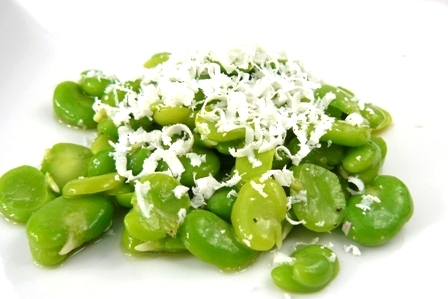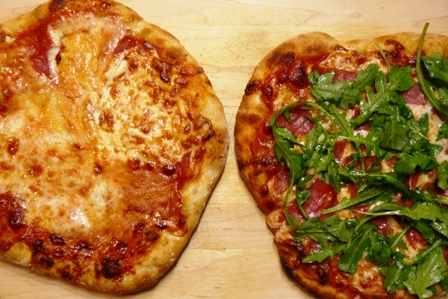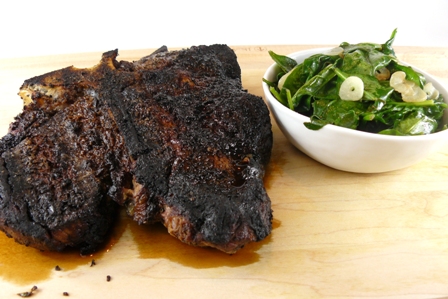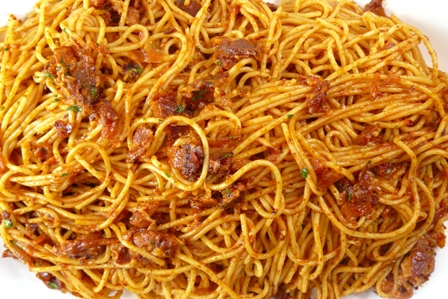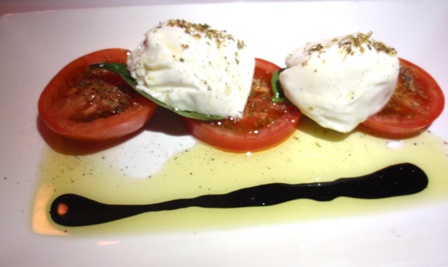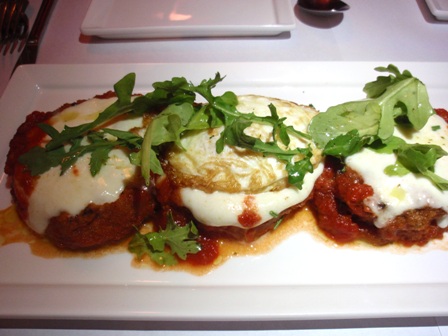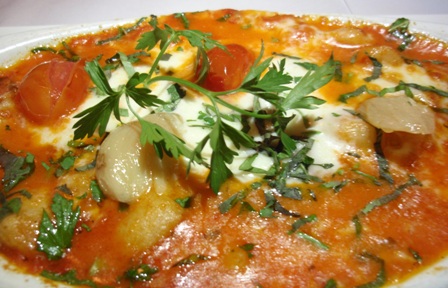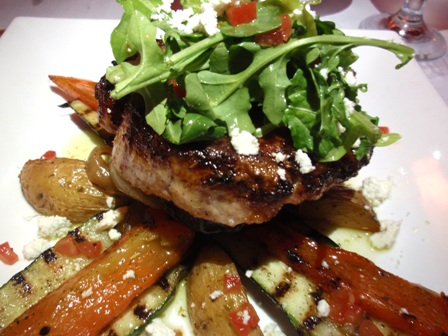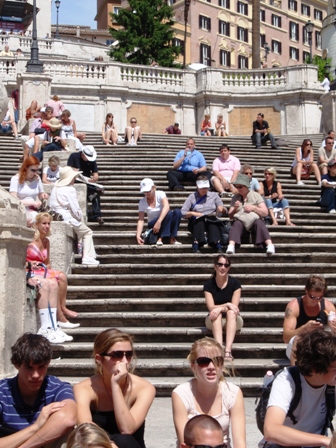Global Bites Project | Italian Cuisine
Posted on June 13, 2012
Country
Italy
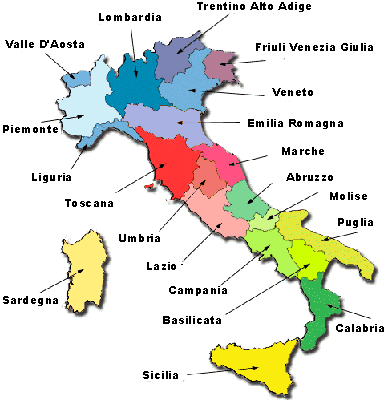
Introduction
I thought this would be an easy country to cover, but it turned out to be difficult for me to sum up Italian cuisine and it's characteristics. I think mainly because the cuisine is so diverse depending on which region you are referring to. Prior to 1861, Italy was composed of many distinct, smaller nation-states each with their own distinct cuisine. Add to that influences by neighboring countries, invasions, and rule by other cultures, you really get a diverse cuisine. To try out the different regions, I did the Festa Regionale at Il Fornaio for two consecutive years. They prepare dishes from a different region each month for you to try, it was fun. I traveled to Italy in 2008 and took a couple of food and wine tours. I remember the guide telling us that each region or town makes what they are good at and the recipes stay the same for generations. In other words, the best particular cheese would always be made from the cows in a certain area, and made the exactly same way according to tradition. The exact taste cannot be duplicated due to the inability to replicate the exact conditions anywhere else in the world.
When I visited Italy, I traveled to Rome and Florence. The food was the best that I have ever had in my life. It sounds crazy, but the food in the States tasted terrible to me for weeks after I got back. I tried to find equivalents here but could not. I am truly convinced that Italy is the Garden of Eden and that it has the most perfect food in the world. Every bite was fantastic, it was like I had never really eaten before that trip. I am looking forward to going back.
Typical Ingredients and Dishes by Region
Italy is made up of 20 distinct regions that use local ingredients to make very different regional dishes.
Starting in the northwest, in the VALLE D'AOSTA region common ingredients include: mushrooms, chestnuts, corn, young ox, and pheasant. Common dishes and products are: fontina cheese, fondue, various cured meats and sausages, bread soup, carbonade (sauce with pancetta and egg), montebianco (sweetened chestnut purée), and polenta.
In the PIEMONTE region common ingredients include: game, truffles, rice, and hazelnuts. Common dishes and products are: tomini, bagna caôda (olive oil, garlic and anchovy dip), castelmagno, bollito misto (mixed boiled meats), salsa verde (parsley caper sauce), risotto, grissini, and zabaglione.
In the LOMBARDIA region common ingredients include: asparagus, veal, pork, goose, trout, butter, and zucca. Common dishes and products are: risotto alla Milanese, pannetone, osso bucco, tortelli de zucca, bresaola, Gorgonzola, bel paese, Asiago, and mascarpone.
In the TRENTINO ALTO ADIGE region common ingredients include: rye, potatoes, corn, onions, apple, cabbage, pork, and pork fat. Common dishes and products are: gnocchi di patata, strudel, sauerkraut, polenta, Asiago, speck, and canederli.
In the VENETO region common ingredients include: granoturco, rice, radicchio, beans, asparagus, zucca, cabbage, potatoes, fish, and burro. Common dishes and products are: pasta e fagioli, risi e bisi, carpaccio, polenta, and tiramisu.
In the FRIULI-VENEZIA GIULIA region common ingredients include: polenta, beans, potatoes, cabbage, mushrooms, pork, and venison. Common dishes and products are: prosciutto, grappa, montasio, Asiago, jota, and frico.
In the LIGURIA region common ingredients include: golden raisins, rabbit, basil, pine nuts, walnuts, olive, and fish. Common dishes and products are: pesto alla Genovese, vincigrassi, salsa di noci, trenette, gnocchi, fish soup, fish stew, torta pasqualina, ravioli, and focaccia.
In the EMILIA-ROMAGNA region common ingredients include: mela, pork, milk, sole, eel, tomato, grapes, oregano, and other herbs. Common dishes and products are: Parmesan cheese, prosciutto, cutatello, mortadella, balsamic vinegar, cotechino, fish soup, anolini, tortellini, tagliatelle, and lasagna.
In the TUSCANY/UMBRIA region common ingredients include: olive oil, Tuscan cabbage, pecorino, sage, pinoli, beans, spinach, fennel, fresh fava beans. Common dishes and products are: panzenella, crostini, papperdelle alla cacciatore, arista alla fiorentina (roast pork), peas with pancetta, buccellato (Tuscan cake), and castagnaccio (chestnut flatbread).
In the MARCHE region common ingredients include: pork, rabbit, quail, cauliflower, finocchio, tartufo, mushrooms, and other vegetables and fish. Common dishes and products are: ricotta salada, pecorino, coppa, fegatino, prochetta, coniglio in porchetta, brodetto, and stuffed olives.
In the LAZIO-ROME region common ingredients include: baby lamb, veal, artichoke, cardoon, bell peppers, arugula, and chicory. Common dishes and products are: pecorino romano, ricotta, strutto, gnocchi di semolina, spaghetti alla carbonara, spaghetti all puttanesca, and saltimbocca.
In the ABRUZZI/MOLISE/PUGLIA region common ingredients include: peperoncini, bell peppers, lentils, potatoes, peas, Italian dandelion, puntarelle, turnip greens, small octopus, and lamb. Common dishes and products are: ventricina, capocollo, scamorza, incapriata, maccheroni alla chitarra, and cured tuna sausage.
In the CAMPANIA/BASILICATA region common ingredients include: agnello, pork, young goat, potatoes, tomatoes, bell peppers, peperoncino, and eggplant. Common dishes and products are: mozzarella, burrata, provolone, caciocavallo, pizza, calzone, caprese, spaghetti alla puttanesca, and eggplant Parmesan.
In the CALABRIA region common ingredients include: bell peppers, peperoncino, eggplant, lemon, figs, tomatoes, beans, olives, raisins, hazelnuts, almonds, swordfish, anchovies, sardines, and tuna. Common dishes and products are: scamorza, provolone, mozzarella, caciocavallo, capocollo, seafood salad, and cannelloni.
In the SARDINIA region common ingredients include: pork, agnello, capretto, peperoncini, tomatoes, saffron, beans, wheat, chickpeas, capers, and fennel. Common dishes and products are: pecorino sardo, ricotta, spit-roasted piglet, pane carasau, malloreddus, bottarga, and favata.
In the SICILIA region common ingredients include: olives, oranges, grapes, walnuts, mandoria, and various fresh fish. Common dishes and products are: ragusano, ricotta, cassata, canestrato, caponata, gelato, peperonata, scaloppine al Marsala, pasta reale, and arancini.
My Adventure
I had a hard time choosing recipes to represent Italian cuisine. Even though I already had several on my website, I wanted to cook a few more. When I think of Italian cuisine, I think of bright, fresh, and seasonal ingredients. For this example, I made Fava Beans with Ricotta Salata. I love this dish, I got the fava beans fresh from the farm.
For my next dish, I made two pizzas. Pizza was everywhere in Rome and we had it several times. Below is a Quattro Formaggi Pizza and a Prosciutto and Arugula Pizza. Super yum!
Next, I made Steak Florentine. According to Mario Batali, this is a very typical dish from the Tuscan region. It was delicious!
I couldn't cover Italy without making a pasta, so I made Spaghetti all'Amatriciana. I loved it!
Additional recipes for Italian cuisine can be found here. I am always adding more, so check back!
For my restaurant selection, we went to Ristorante Fratello in San Jose. They make their own pasta and import several other ingredients from Italy. It was good! Here is what we had.
Caprese
Melanzana Parmigiana (Eggplant Parmesan)
Gnocchi Sorrentina
Costole di Maiale (Pork Chop)
Me sitting on the Spanish Steps in Rome.
Next stop, France.
All articles for the Global Bites Project can be found here.
(Ref. Jeremy MacVeigh's International Cuisine.)


